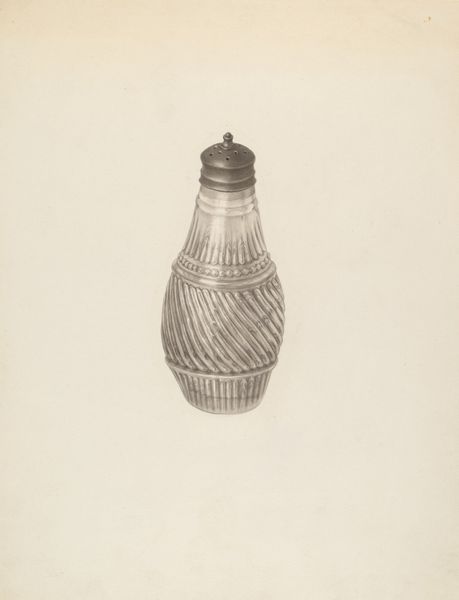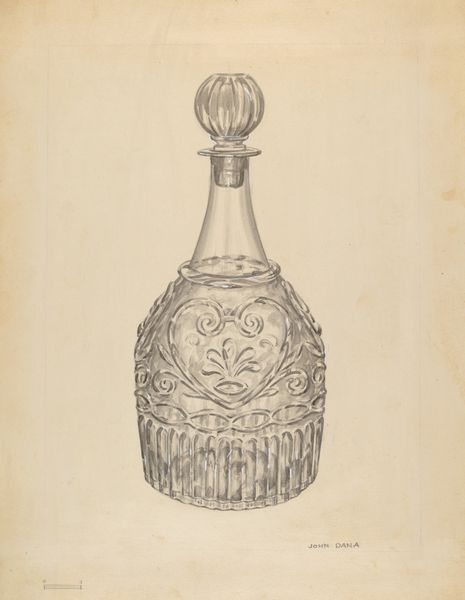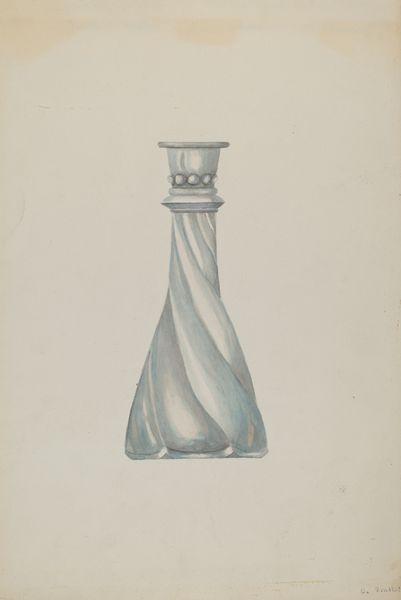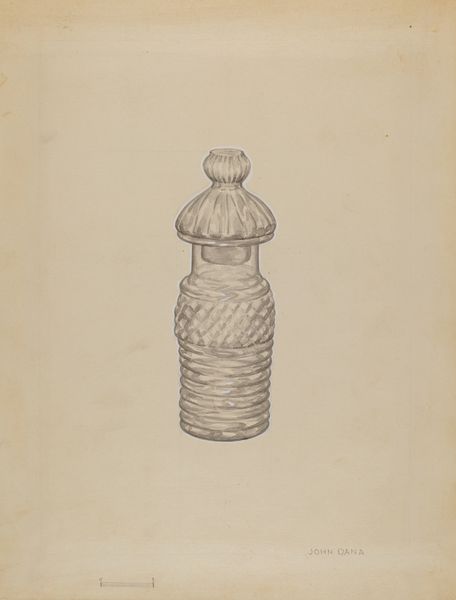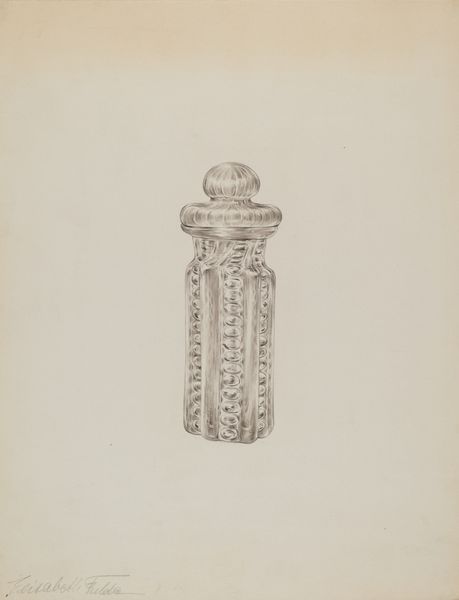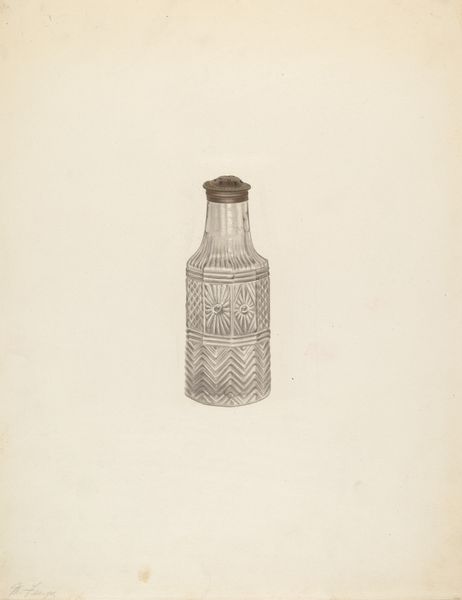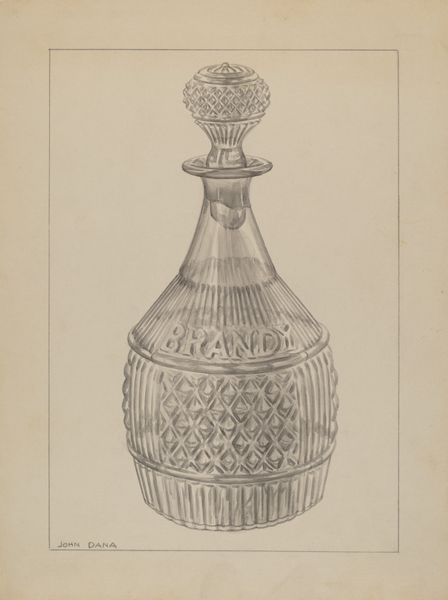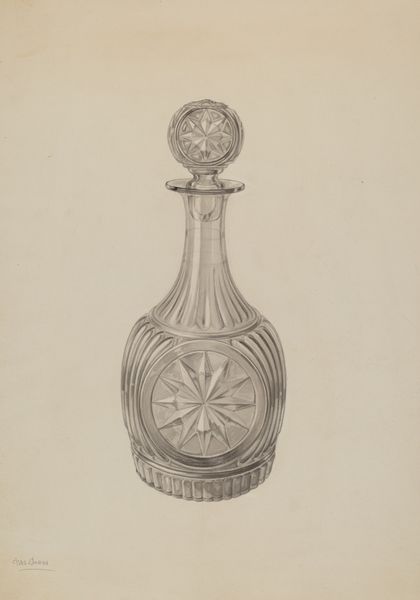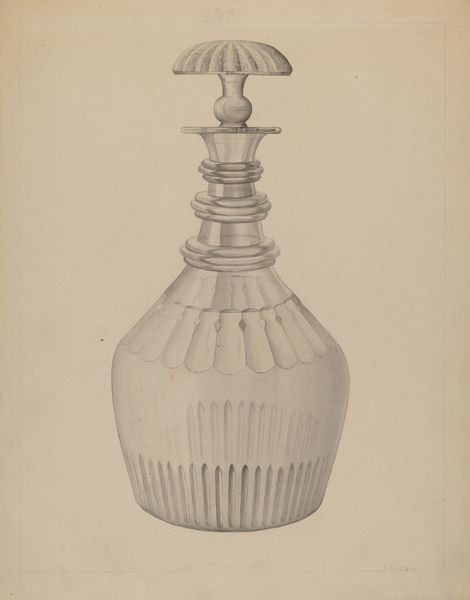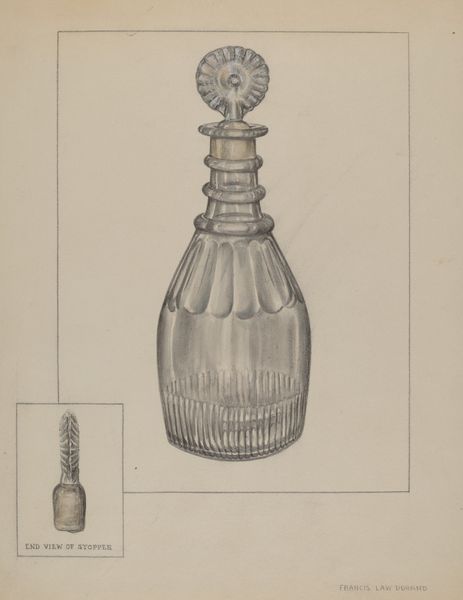
drawing, pencil
#
pencil drawn
#
drawing
#
pencil sketch
#
pencil
#
realism
Dimensions: overall: 28.7 x 22.9 cm (11 5/16 x 9 in.)
Copyright: National Gallery of Art: CC0 1.0
Curator: Elisabeth Fulda created this "Cruet Bottle" around 1939, a delicate pencil drawing rendering a glass object. What strikes you initially? Editor: The delicacy of it. It’s fragile, almost ethereal. The meticulous detail makes the bottle feel like a relic from a bygone era. Curator: Considering the period, during which Fulda created many such renderings for the Index of American Design, these depictions take on a specific meaning, almost like a desire to hold onto disappearing traditions of craftsmanship amidst rapid industrialization. Editor: I agree. The bottle itself speaks to ritual, perhaps religious or domestic. These kinds of vessels carry generations of meaning; think of communion, anointing, or simply setting a table with dignity. Curator: Precisely. We must not overlook the subtle commentary embedded in Fulda's choices. These everyday objects, rendered with such care, point to complex social fabrics: Who made them? Who used them? How are they now memorialized through art? Editor: And glass is such a loaded material. Its transparency invites us to look inside, to contemplate what it holds, both physically and symbolically, but also, its fragility. This is a study in capturing both solidity and near-absence simultaneously. Curator: A fascinating contradiction indeed. By drawing a glass cruet, Fulda invites us to reconsider our own relationships with objects and the memories and values that they carry within. It shows how objects also function as social text and historical marker. Editor: Looking at it again, the soft light captured by the pencil enhances that feeling. The play of shadow is more felt than explicitly seen, enhancing the timeless aura of a specific object. Curator: Yes, this drawing operates not simply as an artistic endeavor, but as an investigation into memory, identity, and material culture, through the close study of one single glass cruet. Editor: Fulda manages to take something quite commonplace and imbue it with significance far beyond its material function. It encourages us to see potential history in everyday things.
Comments
No comments
Be the first to comment and join the conversation on the ultimate creative platform.
